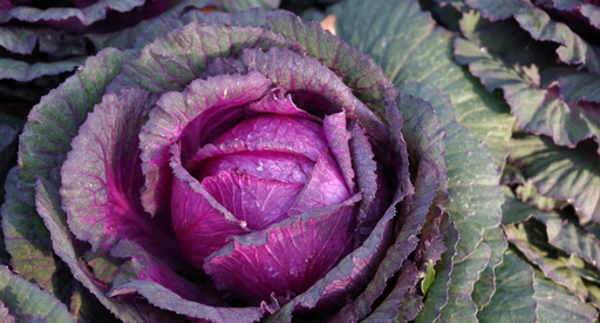
Bursting with goodness, brassicas are brilliant crops to grow in the winter garden. Cabbage, cauliflower, Brussels sprouts, broccoli and kale are popular choices to plant. Follow our step by step guide to growing below.
PREPARE
Like building a house a good foundation is the key to success in your garden. The better the soil, the better your plants will grow. If you are starting with an existing garden bed dig in organic matter like Tui Sheep Pellets and Tui Compost to your soil. Then you can add a layer of Tui Vegetable Mix. If planting in pots and containers, fill with Tui Vegetable Mix.
Most brassicas like a full sun, sheltered position. Some brassicas don’t like temperatures over 25 degrees such as broccoli and cabbage so check you are planting at the correct time, refer to our planting and harvesting table at the bottom of the article.
Space larger varieties at least 50cm-70cm apart, to ensure the crops can fully mature and are not fighting for space, fertiliser and water. Some brassicas do thrive in pots and containers but choose the smaller varieties. Cabbages and kohlrabi grow well in containers. If you planted a certain variety of brassica last year don’t grow them in the same spot as pests and diseases can be lingering in the soil, read our Crop Rotation Guide here.
Choosing what to plant
Choosing a variety to plant is difficult because there are so many! A handful of brassicas are exceptionally quick to grow, these are often referred to as Asian greens and include bok choy, mizuna, mibuna, misome and mustard. Right now cavalo nero is in vogue and it produces leaves for up to six months so it’s a real winner! Check out top varieties to plant here.
PLANT
If you’re a first time gardener you may find it easier to grow from seedlings, rather than seeds, although seeds are a more economical option. Check seed packets or plant labels for individual planting instructions. The best times to plant are early in the morning or late in the day, so the plants aren’t exposed to the hot sun straight away. Always water plants well before and after planting.
Planting in garden beds
- Soak seedlings in a bucket of Tui Organic Seaweed Plant Tonic and allow to drain. This will help prevent transplant shock.
- Add a layer of Tui Vegetable Mix to the planting area.
- Dig a hole, approximately twice the depth and width of the root ball of your plant.
- Gently loosen the root ball of your plant and position the plant in the centre of the hole.
- Fill in with Tui Vegetable Mix.
- Press soil gently around the base of the plant.
- Water your plant well and continue to water regularly.
Planting in pots and containers
- Soak seedlings in a bucket of Tui Organic Seaweed Plant Tonic and allow to drain. This will help prevent transplant shock.
- Partly fill your container with Tui Vegetable Mix.
- Gently loosen the root ball of your plant and position the plant in the container.
- Fill your container with Tui Vegetable Mix up to 3cm from the top.
- Tap the container gently on the ground to settle the mix.
- Press soil gently around the base of the plant.
- Water your plant well.
NOURISH
Feed your plants and they will feed you. Plants use nutrients from the soil as they grow, so replenishing the nutrients ensures your plants grow to their full potential. Select a fertiliser specially blended for your crop like Tui Vegetable Food. Feed brassicas planted in pots and containers with Tui NovaTec Premium fertiliser. Well watered, well nourished veges will have a better chance of keeping insect pests and diseases at bay.
Non-heading of broccoli, cauliflower and romanesco – plants produce loads of leaves and no crop, can be an issue with too much nitrogen fertiliser, which can happen when animal manures are used solely to fertilise vegetable gardens. These types of brassicas need potassium and phosphorus to form the head, use Tui Vegetable Food. While your brassicas are growing regularly apply a dose of Tui Organic Seaweed Plant Tonic to give them a welcome boost.
For supercharged feeding with quick visible results try Tui Vege & Herb Liquid Superfood.
HARVESTING
- Brussels sprouts get sweeter and tastier with each frost, so don’t fret if there’s a heavy frost! Harvest from the bottom of the trunk first and store in the fridge for a few weeks.
- Harvest broccoli and cauliflower when the heads are still tight, once they start spreading they lose flavour. Cut off the head before you pull out the root, otherwise you could end up with dirt all through the head! If you leave the plant in new, smaller heads will appear in a few weeks below the first one and continue to sprout for the rest of the season.
- Pick leaves from leafy varieties of brassicas like cavolo nero as required, the plant will keep producing leaves throughout the season.
- Bok choi and similar brassicas will often regrow if you cut off at ground level with a sharp knife but it won’t be as sweet.
Tui Tips
- Protect your plants from the elements with layers of Tui Pea Straw Mulch, to help keep their roots moist. Keep your garden weed free.
- Be vigilant and stop unwanted insects and diseases from ruining your plants. Slugs and snails can be an issue - lay Tui Quash slug and snail control around young plants. Whitefly and caterpillars, particularly the white cabbage butterfly caterpillar enjoy the young leaves too. If infestations are small, try removing caterpillars individually and squashing. Use a layer of fine netting to stop white cabbage butterfly laying their eggs on your plants.